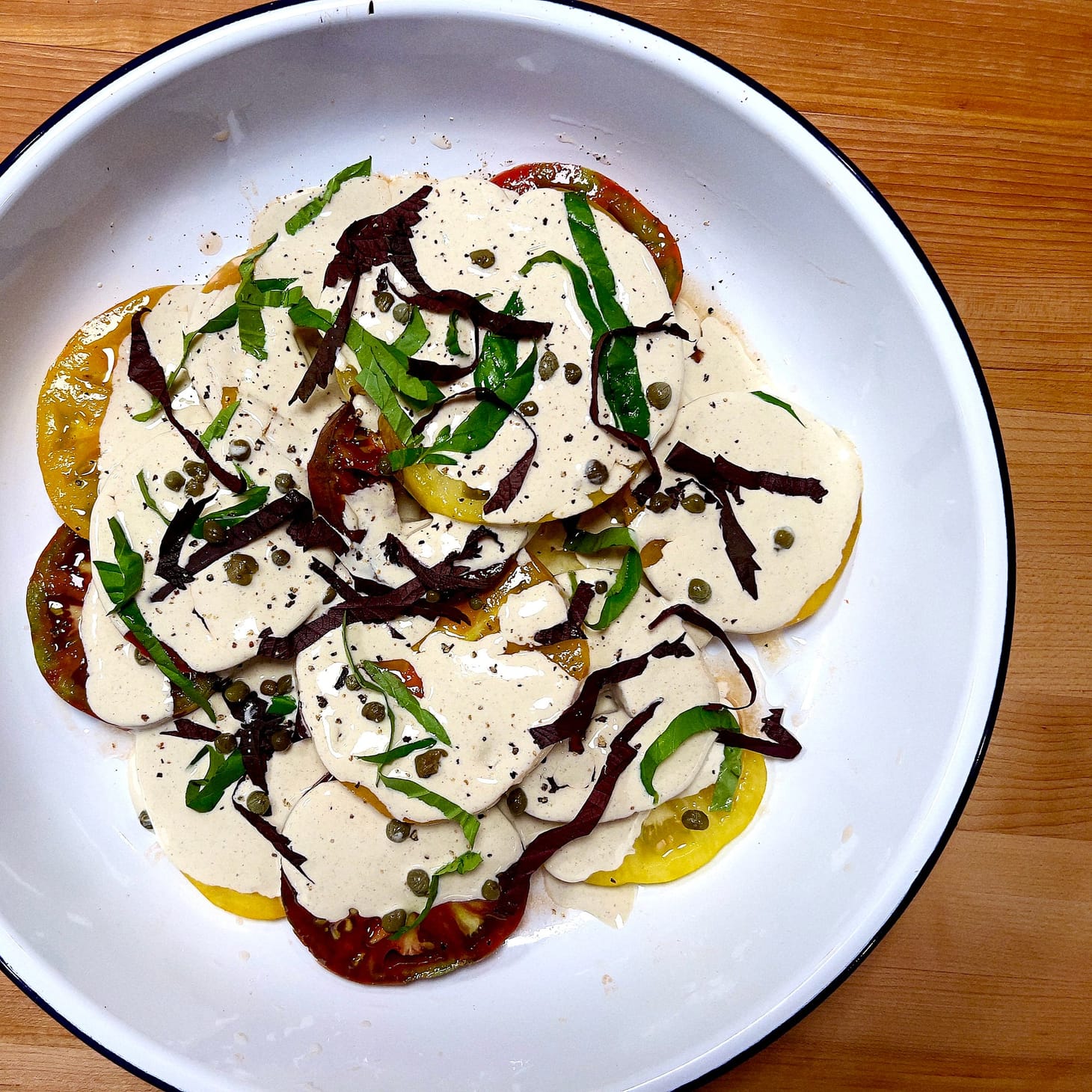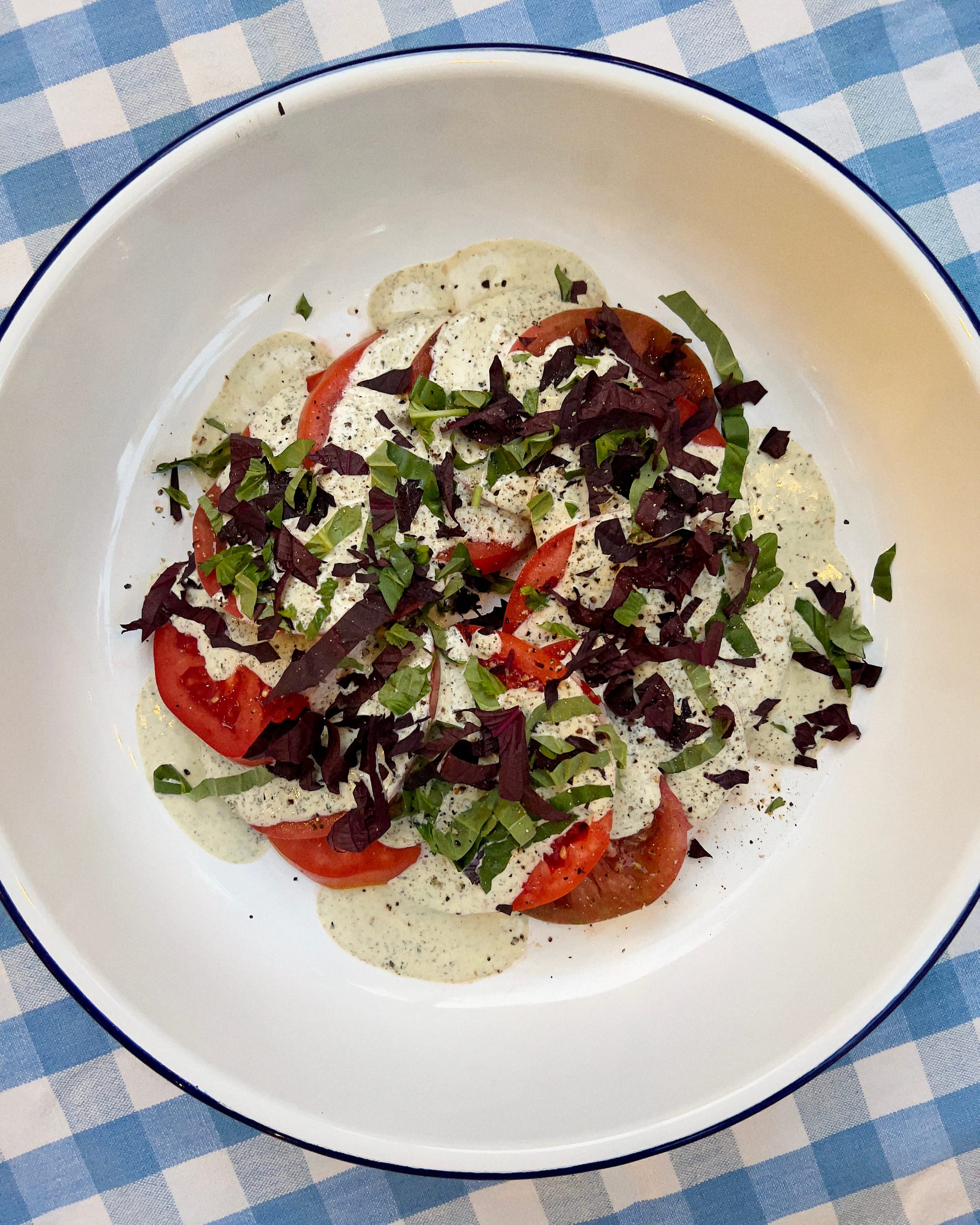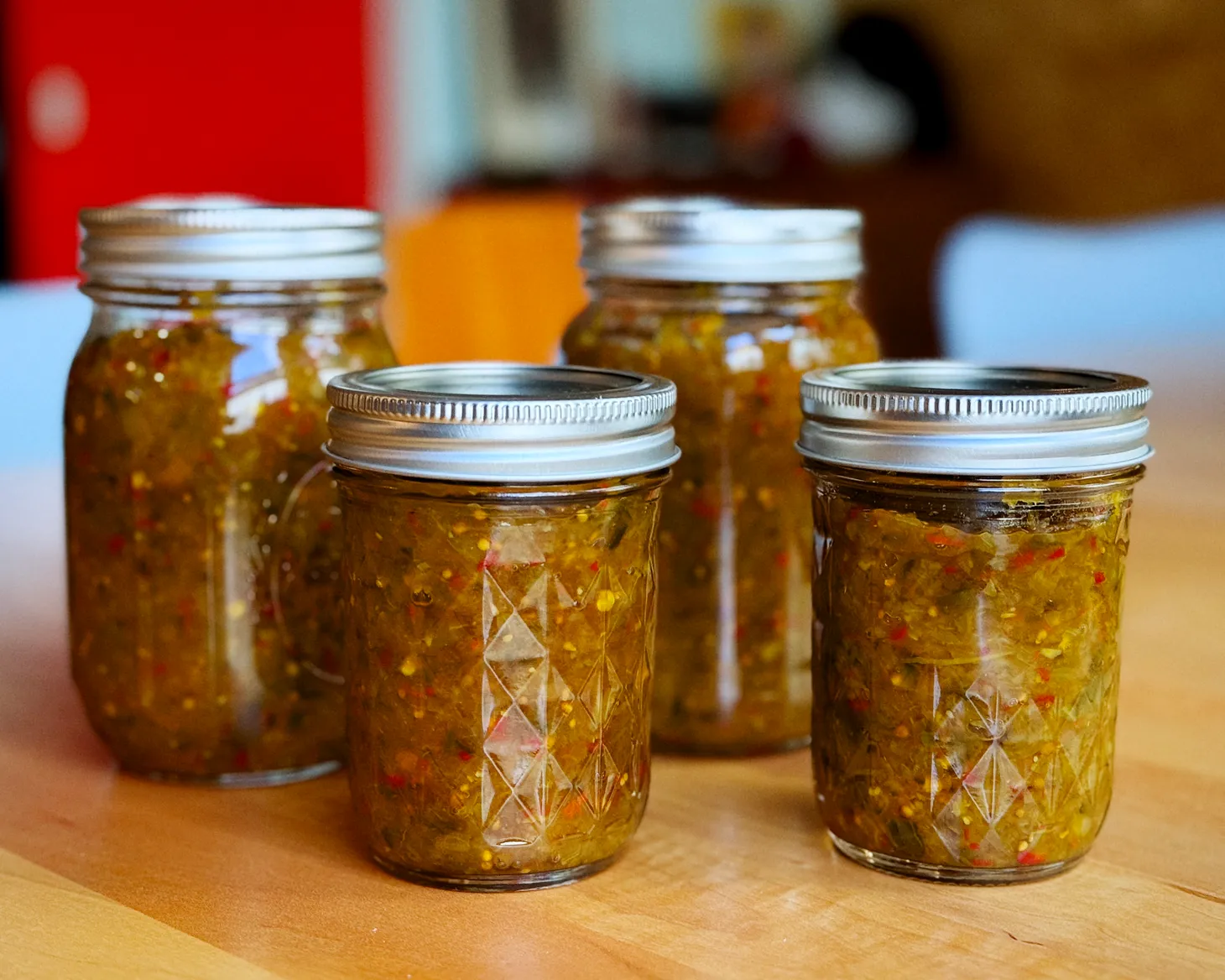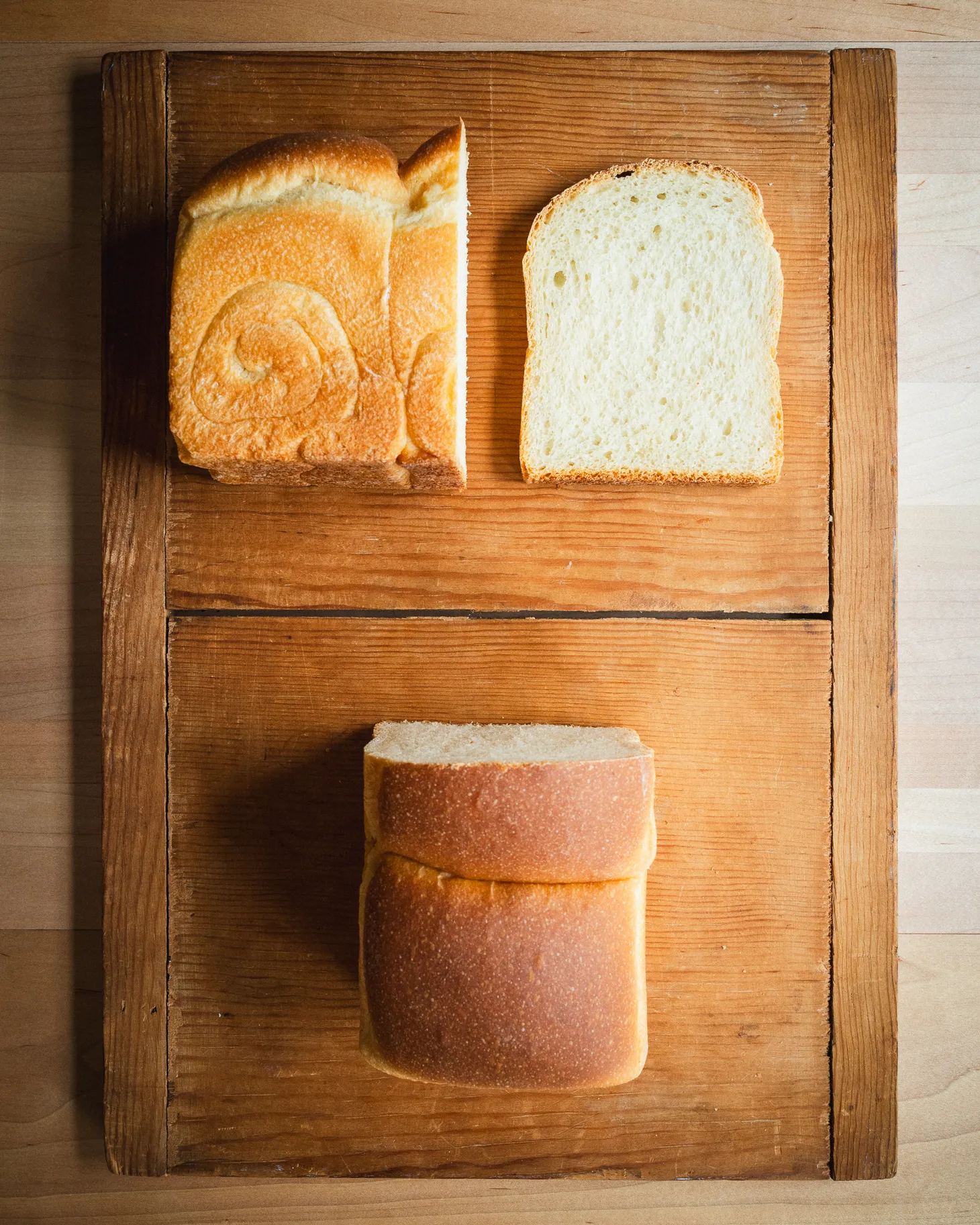Recipe: Nonnato (Vegetarian Tonnato) Sauce
The secret of the sea

Table of Contents
I’ve got another Wordloaf summer vacation recipe for you, and this time I’m going to share it with everyone, since I want this one to be visible to all, especially as it is tomato season right now.
Tonnato is an Italian cold sauce made by blitzing a can of oil-preserved tuna with garlic, capers, anchovy, egg yolk (or mayonnaise), olive oil, and water, until it forms a silky, briny mixture that tastes like the sea, emulsified. It’s traditionally served over thin slices of roasted veal, in a dish called vitello tonnato, but it’s more versatile than that: It’s excellent slathered over so many things, like cold steamed green beans, charred broccoli or broccoli rabe, and bitter greens like frisée, radicchio, and endive. It’s also wonderful as a dip for crisp vegetables and cubes of olive-oil toasted bread (like a creamy bagna cruda), or as a substitute for mayonnaise in sandwiches of all kinds. It would of course make a lovely sauce over roasted or grilled meats of all kinds. And as Helen Rosner says in her 2022 New Yorker story, Tomato Tonnato Is the Sauce of the Summer, it absolutely shines when served over slabs of peak-of-the-season tomatoes.

I love tonnato, but I’m not eating meat anymore, which meant I needed to seek out a vegetarian version. I had an idea how to replace the protein of the tuna (which gives the sauce its essential texture)—tofu—but it wasn’t until my friend Julia Tausch recently shared a recipe for vegan anchovy paste that I had the key to recreating that oceanic flavor.
Julia’s recipe contains a trio of salty, umami-rich ingredients in equal measures to mimic the punch and funk of anchovies: fermented bean curd, umeboshi paste, and powdered seaweed. Each of these alone can give a dish tons of salty depth, but in combination they harmonize into a perfect unison that is way more than the some of its parts.
Fermented bean curd is chunks of whole tofu that are fermented in rice wine and salt; its flavor is funky, salty, slightly sweet, and even faintly cheesy, and it has a creamy texture. It’s available in Asian markets and is usually sold in glass jars. It comes in three main styles: white, red (which also contains red yeast rice), or chili; use either of the first two, preferably white, if you can find it.
Umeboshi are salted, fermented Japanese stone fruits that are commonly referred to as plums but are actually closer to apricots. They give dishes an astringent, tart, salty, and umami flavor. Umeboshi are sold whole in brine, or as a paste, which you want here.
Julia’s recipe calls for any one of a few seaweeds: dulse, wakame, or kelp. Seaweeds are rich in glutamic acids (aka MSG, or monosodium glutamate), salt, and minerals. Kelp, or konbu, is used to make dashi, the base of miso soup and ramen broth, while dulse and wakame are two “sea vegetables” that are used in soups and salads in Asian cuisine. Any of these will work here, and you’ll find at least one of them in the Japanese section of a good grocery store or any Asian market. (Even nori will work here, though it has a more distinctive flavor than the others.)
Once I tried Julia’s anchovy paste substitute, I knew it would be just the thing in a vegetarian tonnato, and I wasn’t wrong. The only changes I made was to dial back the umeboshi paste slightly, since the fruity sweetness it imparted was a bit strong in this context.
As for the tofu, I’ve made it with a few styles of tofu, and all will work, but silken or soft have the right water content (firmer ones will require extra water to thin out the sauce).
As I mention in the notes, you should taste the sauce for seasoning and depth once it is processed, and add salt or extra fermented bean curd or seaweed powder if you like. And be sure to thin it out before serving if you want a pourable consistency (if you use it as a dip or spread, leave it as thick as you like).
Thanks much to Melisa Spence for confirming this recipe was good, Julia Tausch for the anchovy solution, and to Helen Rosner, upon whose tonnato recipe this is based.
—Andrew
Nonnato (Vegetarian Tonnato) Sauce

Nonnato (vegetarian Tonnato)1.06MB ∙ PDF fileDownloadDownload
Makes about 2 cups
- Fermented beancurd is available in Asian markets, usually in glass jars. Use white or red (colored with red yeast rice) here, not the chili-spiced style.
- Umeboshi (pickled, salted plum) paste and seaweeds are available in the Asian section of many supermarkets, or in Asian markets.
- Grind the seaweed to a powder in a spice grinder; if unavailable, soak it in a small amount of warm water until softened, then add to the blender whole.
- The seaweed powder may be visible as pretty green flecks in the sauce, depending upon which one you use.
- This sauce should be punchy and heavily seasoned, especially when served with watery vegetables like tomatoes, so aim for that when adding salt at the end of step 1.
- The sauce thickens as it sits, so be sure to add cold water to achieve the desired consistency before serving.
8 ounces tofu, preferably silken or soft, drained
¼ cup mayonnaise (vegan if desired)
1/3 cup olive oil
3 tablespoons lemon juice (from 1 lemon)
1 tablespoon capers in brine, drained
1 medium garlic clove, peeled
1 tablespoon (20g) white or red fermented beancurd
1 teaspoon umeboshi paste
1 tablespoon (4g) powdered seaweed of your choice (dulse, wakame, & kelp are all great; even nori will work)
1 tablespoon (or more) cold water
salt, if needed
- In a blender or food processor, combine all ingredients except the water, and blend until the mixture achieves a pale, silken consistency, slightly thicker than cake batter, pausing and scraping down the sides as needed. Add the water and blend for another 10 to 15 seconds until the sauce takes on a slightly glossy texture. If the mixture feels too thick or lumpy, add more cold water, 1 teaspoon at a time, until you reach the desired consistency. Season with salt (and or additional bean paste or powdered seaweed) to taste if needed. Transfer the nonnato to a container, cover tightly, and refrigerate until set, at least 30 minutes (and up to 5 days).
- Stir again before serving, thinning with additional cold water if necessary, to achieve a thick, but just-pourable consistency.
wordloaf Newsletter
Join the newsletter to receive the latest updates in your inbox.





